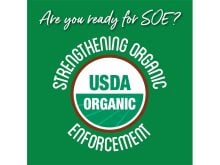Federal regulatory changes in recent years have made it easier for
cattle producers to collect semen from their bulls for use within their
own herds.
The changes reduce the amount of time and testing required, while still
keeping checks in place to protect herd health.
“It’s easy now,” said Manitoba Agriculture livestock specialist John
Popp. “There’s nothing that can make this any better than what it is.”
The process for a bull owner wanting to collect semen solely for use
Read Also

U.S. bill could keep out Canadian truckers
The Protecting America’s Roads Act, which was tabled in the U.S. House of Representatives at the beginning of October, would “rid the country of illegal immigrant commercial truck drivers and ineligible foreign nationals.”
within his herd goes like this:
n* The semen is collected and tested for quality. Good-quality semen
is frozen using liquid nitrogen.
n* A blood sample taken from the bull at the time the semen is
collected is tested for brucellosis at a lab accredited by the Canadian
Food Inspection Agency.
n* The results of the brucellosis testing are usually known within two
or three weeks. If the tests come back negative, the semen can be
released for use within the producer’s herd. A CFIA permit is also
issued and records are kept with details about the semen.
Semen must be collected by a CFIA-approved veterinarian. While semen
can be collected at the ranch, sometimes it is more practical to do it
at a veterinary clinic.
The procedure has to be done in a warm area, because of the risk of
cold shock to semen if it is drawn outdoors in winter.
David Hamilton, a veterinarian at Morden, Man., is among those
certified to provide the service.
He said he has seen increased interest from cattle producers because of
the simplified process.
Collecting semen from a quality bull assures the cattle producer that
the bull’s genetics won’t be lost if it dies or can no longer breed.
“If you have his semen on hand, you can keep his genetics going through
AI (artificial insemination),” said Hamilton.
The process can also work when two or three cattle producers share
ownership in a bull. If the semen from their bull is approved and
released, they all can take advantage of the bull’s genetics.
One possible scenario is that the bull would be put on pasture to breed
the cows of one owner, while the other owners could use artificial
insemination.
Semen collection and evaluation costs $70, Hamilton said. Semen doses
cost between $3 and $5 each, depending on how many doses can be drawn
from the amount collected.
A yearling bull typically yields between 50 and 100 doses during semen
collection. A mature bull generally yields between 50 and 200 doses.
Although the rules have been simplified, they are regulated to prevent
abuse.
















